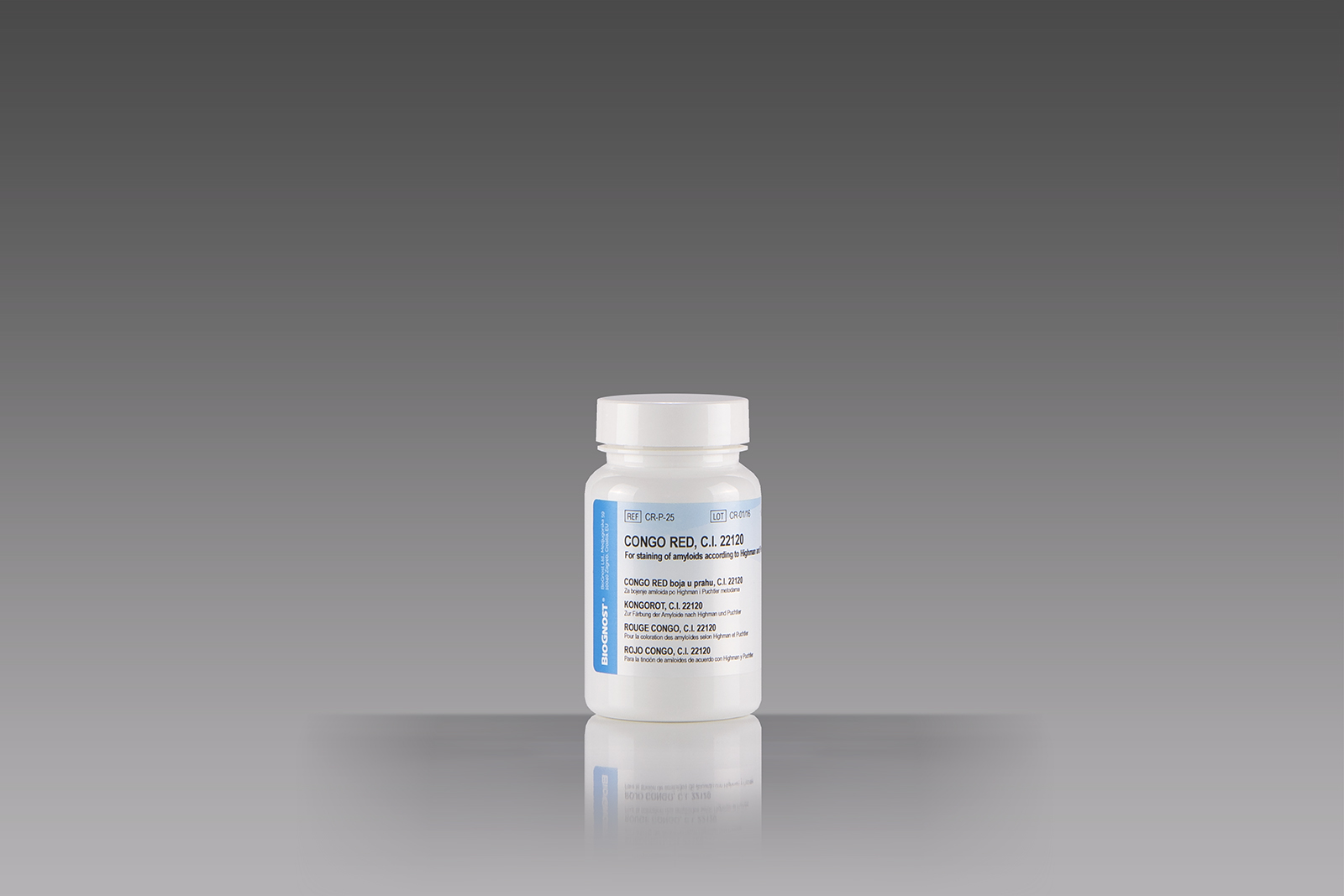Introduction
Histology, cytology and other related scientific disciplines study the microscopic anatomy of tissues and cells. In order to demonstrate a good tissue and cellular structure, the samples need to be stained in a correct manner. Congo Red dye is used in biochemistry and histology for identifying amyloids and staining microscopic sections, especially cytoplasm and erythrocytes. Amyloids are clusters of non-soluble, fibrous proteins. Accumulation of amyloids in organs and tissues may cause amyloidosis. It is also used in microbiological epidemiology for the rapid detection of virulent Shigella flexneri serotype 2a. The dye binds to its bacterial lipopolysaccharide structure. Congo Red is also used as a pH indicator because of its capability of turning from blue to red at pH 3.0 – 5.2.


